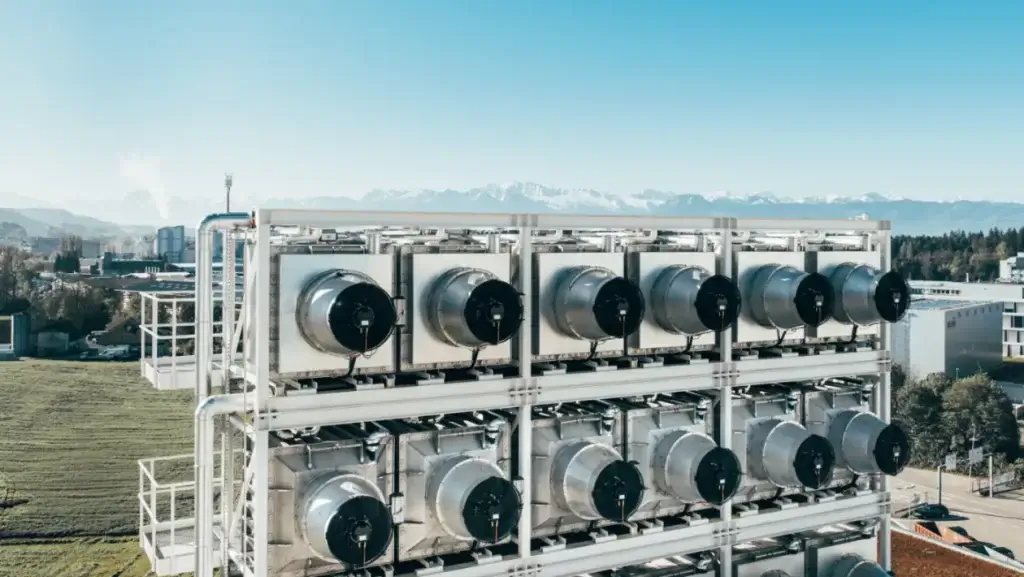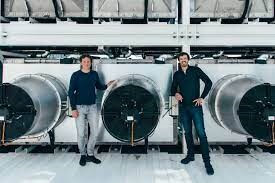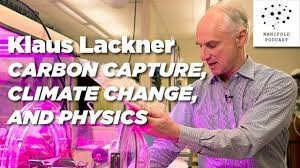Goals Paris Climate Agreement Almost Met

New Study reveals progress
eyesonsuriname/ m. mcgrath
Amsterdam, 13 march 2023 — A new way to capture carbon dioxide from the atmosphere and store it in the sea has been presented by scientists.
The authors of the proposal, published in Science Advances, say the new approach captures CO2 from the atmosphere up to three times more efficiently than current methods.
Carbon dioxide, which contributes to global warming, can be turned into baking soda and stored safely and cheaply in seawater.
The new method could accelerate the deployment of carbon removal technology, according to experts.
As the world has struggled to limit and reduce carbon dioxide emissions over the last few decades, a number of companies have focused on developing technologies to remove CO2 from the atmosphere.

Climeworks in Switzerland is perhaps the best known. Over the past ten years, the company has developed machines to absorb air from the atmosphere that filter and retain carbon dioxide molecules.
In Iceland, captured CO2 is injected deep underground in a power plant, where it is permanently turned into rock.

The company recently started selling a certified carbon removal service to large enterprise customers including Microsoft, Spotify and Stripe.
But the big challenge for most current direct air capture approaches is cost.
CO2, although a powerful global warming agent, is relatively diluted in the atmosphere at about 400 parts per million (ppm).
Huge machines are then needed that require large amounts of energy to absorb and discharge CO2.
This new approach, which uses resins and other chemicals already available, promises much greater efficiency and lower cost, according to the scientists involved.
The research team took an approach used for water application and “tweaked” existing materials to remove CO2 from the atmosphere.
In tests, the new hybrid absorber material was able to take up to three times more CO2 than existing substances.
Planting trees on a large scale, as is done in several parts of the world including Brazil and China, is an efficient form of direct air capture, but requires large areas of land.
“To my knowledge, there is no absorber material that, even at 100,000 ppm, shows the ability that we got in direct air capture of 400 ppm,” said lead author of the study,

Arup Sengupta, who is a professor at Lehigh University, In the USA.
“This simple ability to capture high amounts of CO2 in a small volume of material is a unique aspect of our work.”
The development, which is at an early stage, has been well received by other industry players.
“I am delighted to see this paper published, it is very exciting and has a good chance of transforming CO2 capture efforts,” said Professor

Catherine Peters of Princeton University in the US, an expert in geological engineering, who was not involved. in the research project.
“What’s smart about this is that the starting point was a technology previously designed for use in water. This breakthrough applies that technology to the gas phase — a new idea.”
“The demonstrated performance for CO2 capture is promising.”
One of the biggest challenges in capturing CO2 is what to do with the trapped gas.
Storing it under the ground or sea in old oil wells is a widely used approach. But the new paper suggests that, with the addition of a few chemicals, captured CO2 could be turned into baking soda and stored simply and safely in seawater
Sengupta said he wants to create a spin-off company to further develop the technology.
He believes that removing CO2 in this way will not only be critical to limiting the rise in global temperatures, but could also be directly empowering for developing countries.
“We have to take it to places like Bangladesh, Barbados or Maldives, they also have a role to play, they can’t just be spectators who continue to suffer.”
Some scientists are reluctant to place too much emphasis on new and emerging technologies, such as direct air capture, because they fear they could dilute efforts to reduce carbon emissions by governments and individuals.
But with the temperature limits set by the

Paris climate agreement threatened by rising emissions, many others feel that the rapid deployment of direct air capture, in addition to the drastic reduction in carbon, is the best chance of avoiding dangerous climate change.
“It has become even more important now that we are definitely past the point where we have to recover carbon from the environment,” said Professor

Klaus Lackner, a pioneer in the field of CO2 removal.
“Direct capture from the air will have to get cheaper to be a useful contribution. I’m optimistic it can be done.”
Sengupta shares that optimism, believing the new approach can remove CO2 from the atmosphere for less than $100 a ton.
eyesonsuriname/ m.mcgrath









